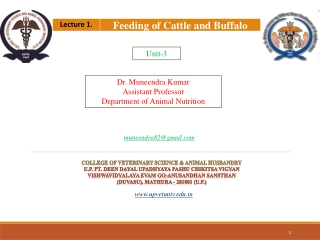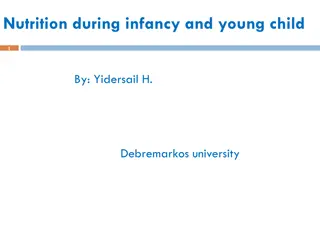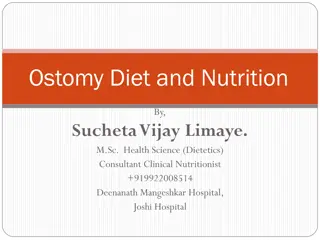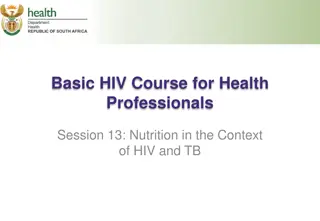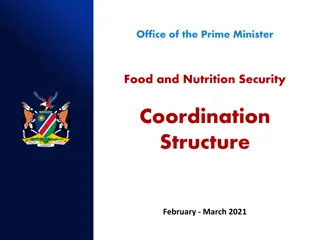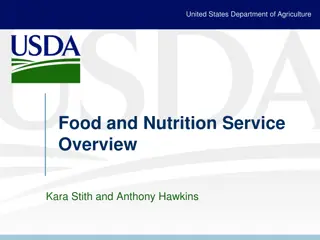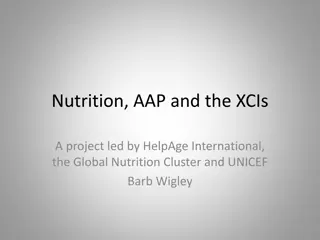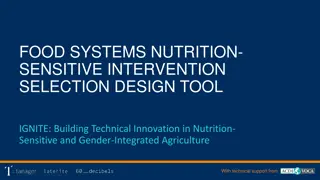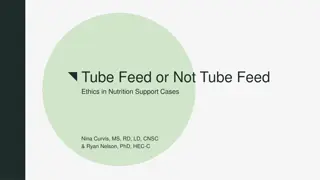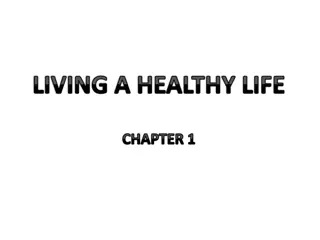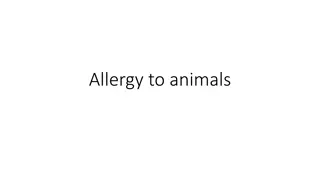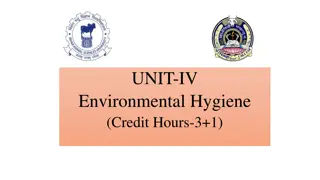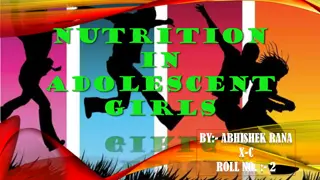Understanding Animal Nutrition for Optimal Health
Explore the essential nutrients required by animals for growth, repair, and overall well-being. From proteins to minerals, discover the functions and importance of each nutrient in animal nutrition. Learn about protein requirements, essential amino acids, carbohydrate needs, and mineral supplements for different types of animals. Uncover the role of fats, proteins, and carbohydrates in providing energy and supporting various bodily functions in animals.
Download Presentation

Please find below an Image/Link to download the presentation.
The content on the website is provided AS IS for your information and personal use only. It may not be sold, licensed, or shared on other websites without obtaining consent from the author. Download presentation by click this link. If you encounter any issues during the download, it is possible that the publisher has removed the file from their server.
E N D
Presentation Transcript
Chapter 21 - Animal Nutrition
Nutrients and Functions Nutrient Protein Function Growth and repair of cells & muscles Produces milk and wool Makes hormones, enzymes and antibodies Insulation Energy Source of Fat Soluble Vits A, D, E and K Energy Heat Fibre for correct rumen functioning Control metabolic processes D healthy bones C prevents infection Calcium - Strong bones and teeth & milk production Iron Produces haemoglobin to carry O around the body Temperature regulation, lactation and metabolic processes Fat Carbohydrates Vitamins Minerals Water
Question.? 1. What is the function of fat? 2. What is the function of protein?
Protein Requirements Young & lactating animals need more. Protein is made up of chains of amino acids (aa).
10 essential aa for mono-gastric animals e.g. pigs. An essential amino acid is one that cannot be manufactured in the body of mono-gastric animals and must be obtained from the animal s diet e.g. lysine and methionine. A non-essential amino acid is one that can be manufactured in the body e.g. alanine and glutamine. Ruminant animals no essential aa - made by micro- organisms in their rumens. Calves and lambs need high-quality protein feed until rumens develop.
Question.? 1. Name one animal that requires more protein. 2. What is an essential amino acid? 3. Give an example of an essential amino acid. 4. What is a non-essential amino acid? 5. Give an example of a non-essential amino acid. 6. What is a ruminant animal?
Carbohydrate Requirements Fibre can only be digested by ruminant animals Provide little energy for mono-gastric animals.
Minerals Macro-minerals (required in large amounts) Ca P K Na S Cl Mg Micro-minerals (required in small amounts) Fe I Cu Co F Mn Zn Mo (Molybdenum) Se
Mineral Supplements Mineral deficiencies deficiency diseases. Diet can be supplemented with minerals by: Dusting mineral supplement onto silage Mineral licks Adding minerals to the drinking water Oral dose Mineral bullet
Deficiency Diseases Nutrient Vit A Vit D Cu Fe Mg Ca Co Se Deficiency Infertility Rickets Swayback Anaemia Grass Tetany Milk Fever Pine Disease Infertility
Question.? 1. Name 2 macro-minerals for animals. 2. Name 2 micro-minerals for animals. 3. State 2 ways an animal s diet may be supplemented with minerals.
Animal Feeds Bulky Feeds: E.g. Grass, silage, hay, root crops (sugar beet) and forage crops (kale). High in water and/or fibre. Fibre = healthy rumens and prevents acidosis.
Concentrates: Eg: Cereals (maize, barley, wheat), fats, oils, molasses. Low in water and fibre. More nutrients in a smaller space. Cereals: Provide energy Supplement poor quality silage Ensure production targets are met.
Question.? 1. Give 1 example of a bulky feed. 2. Give 1 example of a concentrate. 3. Why do cattle and sheep require fibre? 4. Why are cereals used in concentrates?
Ration Formulation A ration is a mixture of food given to an animal. We formulate rations based on what the animal requires, what the ingredients contain and how much the animal will eat. Teagasc have calculated what each animal requires at various stages of growth for maintenance and production.
Dairy Ration Energy and protein needed for milk production. Calcium for milk production. Not enough energy = lower milk yields, lower milk protein and poor fertility. Cereals (wheat and maize) carbohydrates energy Soya bean hulls fibre Molasses sugar energy
Beef Ration Aim reach slaughter weight Do not require a high percentage of protein Energy is important Barley, wheat, maize carbohydrate and energy Soya bean hulls fibre correct functioning of the rumen.
Sheep Ration Fed to pregnant ewe in late gestation. High energy in small quantity of food. Prevents twin lamb disease Called steaming Up High percentage of protein growth of the lamb and milk production Calcium prevents milk fever
Pig Ration Monogastric Less fibre Lysine and methionine (essential amino acids) Soya, palm and rape acid oils are high in fat energy Iron prevent anaemia
Metabolisable Energy Metabolisable energy is the energy from feed that an animal can convert to live weight gain (LWG), milk and wool and is measured in MJ/kg.
Energy lost through: Faeces Urine Methane gas Heat
Question.? 1. What is meant by metabolisable energy? 2. What is metabolisable energy measured in? 3. What happens to the energy that is not converted to muscle gain?
Maintenance and Production Diets Maintenance diet the amount of food that allows an animal to maintain a constant body weight. Production diet the extra amount of feed required to produce 1kg of LWG, 1 litre of milk, 1kg of wool or to produce a calf or a lamb.
Question.? 1. What is a maintenance diet? 2. What is a production diet?
















